Hurrem Sultan Hammam | Istanbul Historic Bath
Hurrem Sultan Hammam, also known as the Roxelana Hammam, is one of Istanbul's most renowned historical Turkish baths.
Located near the Hagia Sophia and the Blue Mosque, this hammam stands as a testament to the architectural grandeur and cultural richness of the Ottoman Empire. Commissioned by Hurrem Sultan, the beloved wife of Sultan Suleiman the Magnificent, the hammam has served as a place of relaxation and socialization for centuries.
The historical significance of Hurrem Sultan bath is deeply intertwined with the legacy of Hurrem Sultan herself. As a powerful and influential figure in the Ottoman court, she played a pivotal role in the political and cultural life of the empire. The hammam, built in the 16th century, reflects her status and the sophisticated tastes of the Ottoman elite. It is an outstanding example of classical Ottoman architecture, designed by the celebrated architect Mimar Sinan, and continues to attract visitors from around the world.
Who was Hurrem Sultan?
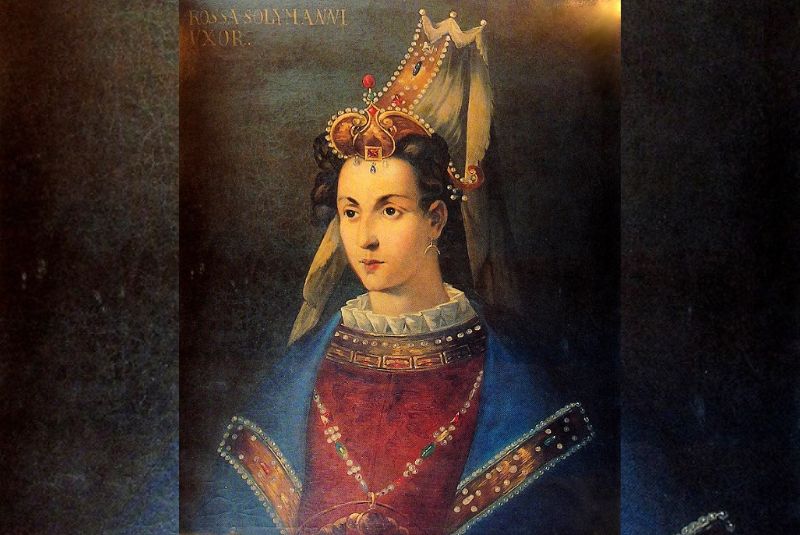
Hurrem Sultan, also known as Roxelana, was born as Alexandra Lisowska in what is now Ukraine. Captured during a raid by Crimean Tatars, she was brought to the Ottoman court as a slave. Her beauty and intelligence quickly caught the eye of Sultan Suleiman the Magnificent, and she became one of his favorite consorts. Hurrem Sultan's rise from concubine to the Sultan's legal wife marked a significant departure from tradition, as Sultans typically did not marry their concubines.
Hurrem Sultan wielded considerable influence within the Ottoman Empire. As Suleiman's wife, she bore him several children, including the future Sultan Selim II. Her position allowed her to act as a political advisor to Suleiman, and she played a significant role in court politics. Hurrem was known for her charitable works, including the construction of mosques, schools, and public baths, which showcased her dedication to the welfare of the empire and its people. Her influence extended beyond the palace walls, and she remains a prominent figure in Ottoman history.
History of Hurrem Sultan Hammam
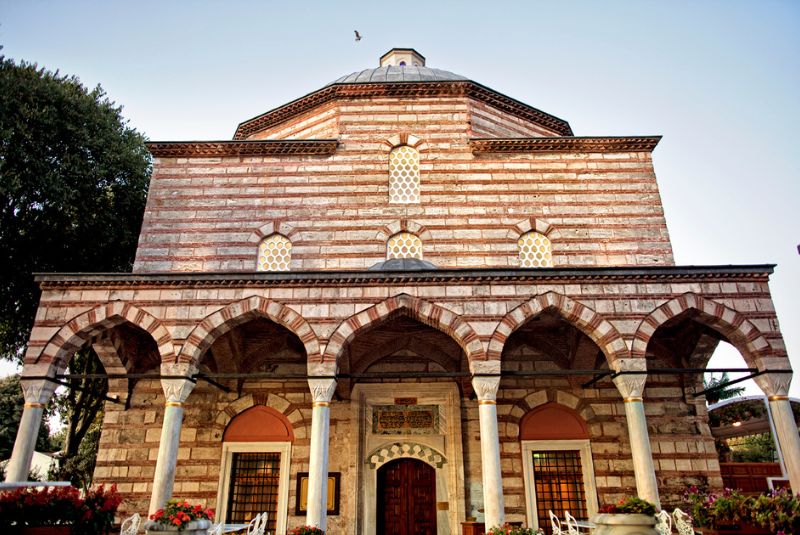
The Hurrem Sultan bath was commissioned by Hurrem Sultan in the mid-16th century. It was designed by Mimar Sinan, the chief architect of the Ottoman Empire, who was responsible for many of the era's most significant architectural achievements. The hammam was built between 1556 and 1557, strategically located between the Hagia Sophia and the Blue Mosque in Istanbul. This placement not only underscored the hammam's importance but also made it a central fixture in the social and cultural life of the city.
the Hurrem Sultan Hammam served as a social hub where people from various walks of life could gather, relax, and rejuvenate. It was a place where the traditions of the Turkish bath were preserved and passed down through generations. Today, the hammam remains a symbol of the cultural and architectural heritage of Istanbul, attracting visitors who wish to experience its historical charm and tranquility.
Hurrem Sultan Hammam Architectural Design

The Hurrem Sultan Hammam, designed by the renowned Ottoman architect Mimar Sinan, is a stunning example of classical Ottoman architecture. The hammam's layout is meticulously planned, with a symmetrical design that includes separate sections for men and women. This separation ensures privacy while maintaining the architectural harmony of the structure. The building is composed of three main areas: the camekan (entrance hall), the soğukluk (cooling room), and the sıcaklık (hot room).
The camekan serves as the entrance hall, a large, welcoming space where visitors can relax and prepare for the bathing ritual. It is characterized by high ceilings and ample natural light, creating an inviting atmosphere. The soğukluk, or cooling room, is a transitional space where bathers can acclimate to the changing temperatures. Finally, the sıcaklık, or hot room, is the heart of the hammam, featuring a large central dome and heated marble platforms where the bathing and scrubbing rituals take place.
Key Elements of Ottoman Architecture in the Hammam
- Domes and Vaults: The use of domes is a hallmark of Ottoman architecture, and the hammam's central dome is a striking feature. It not only adds to the grandeur of the space but also plays a practical role in temperature regulation and acoustics.
- Symmetry and Proportion: The hammam's design emphasizes symmetry and proportion, creating a sense of balance and harmony. This is evident in the layout of the rooms and the alignment of architectural elements.
- Use of Natural Light: Mimar Sinan masterfully incorporated natural light into the design, using strategically placed windows and skylights to illuminate the interior. This enhances the aesthetic appeal and creates a serene ambiance.
- Water Management: Efficient water management is crucial in a hammam. The Hurrem Sultan bath features an advanced system of pipes and channels that supply hot and cold water, ensuring a steady flow for bathing rituals.
- Tiles: The interior is embellished with vibrant Iznik tiles, known for their intricate floral and geometric patterns. These tiles are not only decorative but also functional, as they are resistant to water and humidity.
- Mosaics: Mosaics are used throughout the hammam to add color and texture. The detailed mosaics depict floral motifs and arabesques, typical of Ottoman decorative arts.
- Calligraphy: Arabic calligraphy is another prominent artistic feature. Verses from the Quran and poetic inscriptions are elegantly incorporated into the tilework, adding a spiritual dimension to the space.
- Marble and Stonework: The hammam's marble floors and platforms are both luxurious and practical. The use of marble, with its natural cooling properties, enhances the comfort of bathers while adding to the visual splendor.
Traditional Turkish Bath Rituals
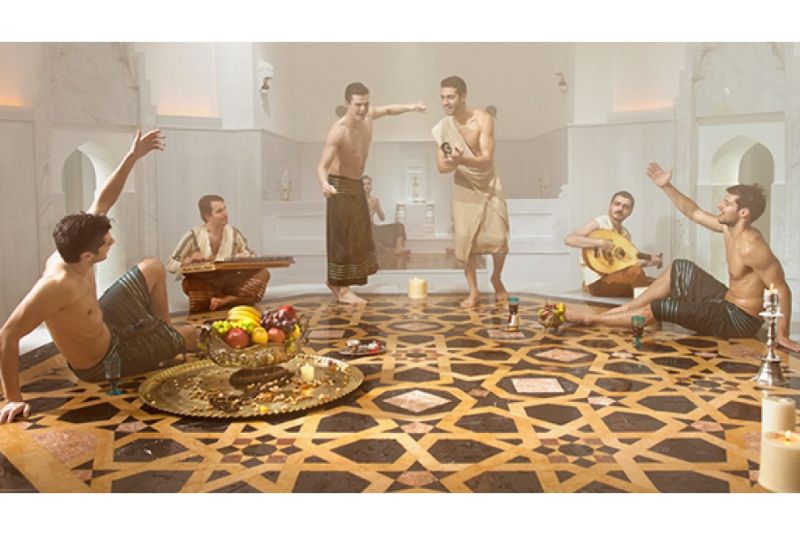
The hammam, or Turkish bath, is an ancient practice deeply rooted in the cultural and social fabric of Turkey. It combines elements of Roman, Byzantine, and Central Asian bathing traditions, evolving into a unique ritual that emphasizes purification, relaxation, and social interaction. The Hurrem Sultan Bathhouse experience is both a cleansing ritual and a communal activity, traditionally enjoyed by people of high social statuses.
Steps of a Typical Hammam Experience
- Entry and Preparation (Camekan): Upon entering the hammam, visitors are greeted in the camekan, a large, domed entrance hall. Here, they change into a peştemal, a traditional cotton wrap, and slippers. Lockers or secure storage are provided for personal belongings.
- Warm-Up (Soğukluk): After changing, bathers move to the soğukluk, or warm room, where they begin to acclimate to the heat. This transitional space helps the body adjust gradually, preparing for the more intense heat of the hot room.
- Heating (Sıcaklık): The next step is the sıcaklık, or hot room. This is the core of the hammam experience. Bathers lie on a large, heated marble slab called the göbek taşı (navel stone). The intense heat opens pores and induces sweating, promoting detoxification. This stage typically lasts about 15-20 minutes, depending on individual comfort levels.
- Exfoliation and Scrubbing: A tellak (male attendant) or natir (female attendant) performs the exfoliation using a coarse mitt called a kese. This vigorous scrubbing removes dead skin cells, leaving the skin smooth and rejuvenated. This process can be quite invigorating and is often a highlight of the hammam experience.
- Foam Massage: After exfoliation, bathers enjoy a luxurious foam massage. The attendant uses a cloth bag to create a rich, soapy lather, which is applied to the body. The massage helps relax muscles and further cleanses the skin.
- Rinsing: Bathers are then rinsed with warm water to remove the soap and any remaining impurities. This is usually done with a series of bowls or under a shower, depending on the hammam's facilities.
- Cooling Down (Soğukluk): After rinsing, bathers return to the soğukluk to cool down gradually. This helps the body return to its normal temperature. During this stage, visitors can relax, enjoy a refreshing drink, and socialize.
- Final Relaxation (Camekan): The final stage is back in the camekan, where bathers can rest, sip traditional Turkish tea, and enjoy light snacks. This relaxation period allows the body to fully recover and rehydrate.
In addition to the standard bathing ritual, many hammams offer a range of additional services:
- Massages: Various types of massages are available, from traditional Turkish massages to more contemporary techniques. These massages are designed to relieve tension, improve circulation, and enhance overall relaxation.
- Exfoliation: The kese exfoliation is a standard service, but some hammams offer additional skin treatments, such as mud masks or moisturizing wraps.
- Steam Baths: Some hammams feature steam rooms, where visitors can enjoy the benefits of steam therapy. The moist heat can help with respiratory issues, improve circulation, and further cleanse the skin.
Hurrem Sultan Hammam Package Options

Zevk-i Sefa (80 Minutes)
This extended package features a traditional body exfoliation, a bubble wash ritual, a full-body bubble massage, and head and neck massages. The experience is enhanced with an aromatherapy massage using redbud-scented oil, all conducted in the privacy of a dedicated massage room.
Pir-ü Pak (45 Minutes)
This package includes a traditional body exfoliation, a bubble wash ritual, a comprehensive full-body bubble massage, and dedicated head and neck massages. It's an ideal introduction to the Turkish bath experience.
Ab-ı Hayat (110 Minutes)
This luxurious option offers exclusive access to a private massage room, a facial massage accompanied by a face mask, a foot massage with redbud oil, and a plate of fresh fruits. The experience includes the convenience of a private changing room and concludes with a special parting gift.
Keyf-i Hamam (60 Minutes)
This offering extends the basic hammam experience with a classic body scrub, a bubble wash ceremony, a full-body bubble massage, and head and neck massages. It concludes with a redbud-scented clay mask that moisturizes and firms the skin.
Hurrem Sultan Bathhouse Nearby Attractions
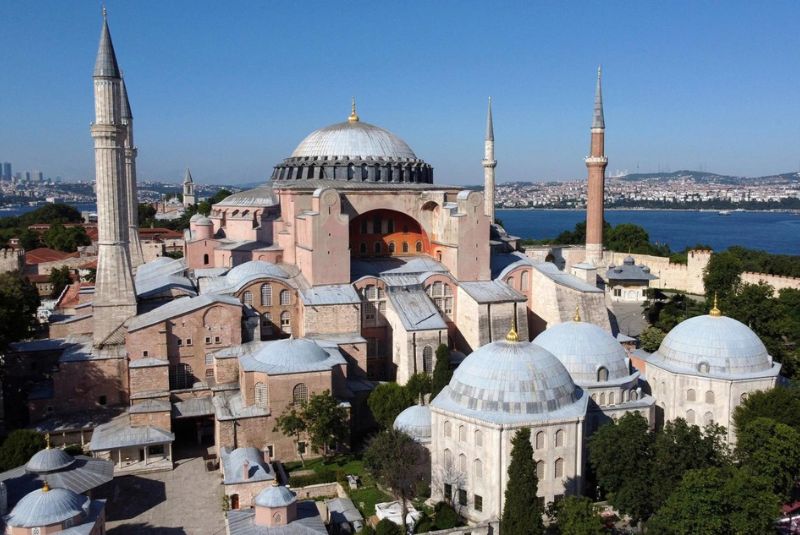
The Hurrem Sultan Hammam is situated in the heart of Istanbul's historic Sultanahmet district, an area teeming with significant landmarks and attractions. Here are some key attractions around the hammam:
- Hagia Sophia (Ayasofya): Once a cathedral, then a mosque, and now a museum, the Hagia Sophia is a masterpiece of Byzantine architecture and a symbol of Istanbul's diverse cultural heritage. It’s located just a short walk from the hammam.
- Blue Mosque (Sultan Ahmed Mosque): Known for its stunning blue Iznik tiles, the Blue Mosque is an architectural wonder and one of Istanbul's most iconic landmarks. It is directly opposite the Hagia Sophia, making it easy to visit both in one trip.
- Topkapi Palace: This sprawling palace was the residence of Ottoman sultans for centuries. Visitors can explore its opulent rooms, stunning courtyards, and the famous Harem section.
- Basilica Cistern: An ancient underground water reservoir, the Basilica Cistern is known for its impressive columns and eerie, atmospheric setting. It offers a fascinating glimpse into Istanbul's Byzantine past.
- Hippodrome of Constantinople: Once the sporting and social center of Constantinople, the Hippodrome features several historical monuments, including the Serpent Column, the Obelisk of Theodosius, and the German Fountain.
- Grand Bazaar (Kapalıçarşı): One of the largest and oldest covered markets in the world, the Grand Bazaar is a bustling hub of commerce, offering a wide variety of goods, from jewelry and textiles to spices and souvenirs.
- Spice Bazaar (Mısır Çarşısı): Located near the Grand Bazaar, the Spice Bazaar is famous for its colorful stalls selling spices, dried fruits, nuts, and other culinary delights.
Hurrem Sultan Hammam Location and Access
Hurrem Sultan Hammam is situated in the European side of Istanbul, specifically in the bustling and tourist-friendly Hagia Sophia Square within the Fatih district. This vibrant neighborhood is surrounded by hotels, shopping centers, and prominent city attractions.
The hammam is approximately 52.7 kilometers from the Bosphorus Strait, taking around one hour and 20 minutes to reach by car. It is about five kilometers (a 23-minute drive) from Taksim Square. For those traveling from Istanbul Ataturk Airport, the distance is roughly 20 kilometers, or a 37-minute drive. From Istanbul Sabiha Gokcen Airport, it is about 45.3 kilometers away, taking approximately one hour and 10 minutes by car.
Visiting Hours: The Hurrem Sultan Hammam is open daily from 8:00 a.m. to 10:00 p.m.
Best Times to Visit Hurrem Sultan Hammam
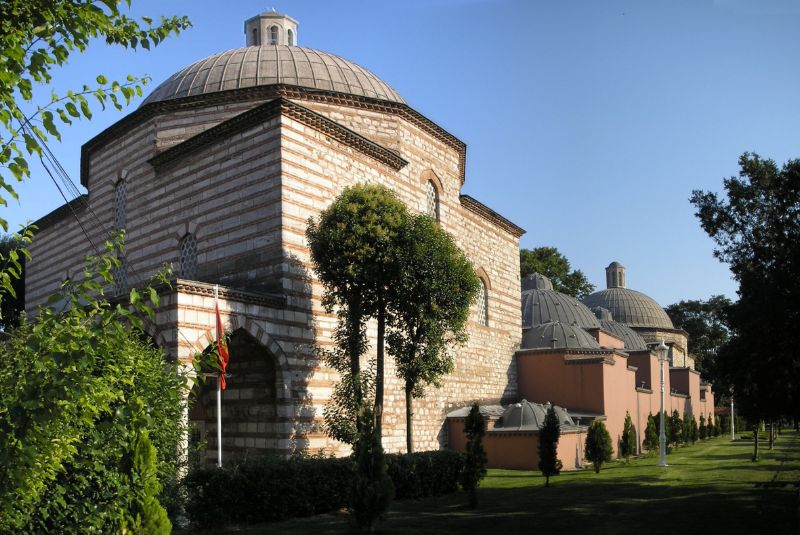
- Weekdays vs. Weekends: Visiting the Hurrem Sultan Hammam on weekdays can be less crowded compared to weekends. Early mornings and late afternoons are often quieter.
- Seasonal Considerations: Spring (April to June) and autumn (September to November) are ideal times to visit Istanbul, as the weather is mild and pleasant. During these seasons, the hammam is not as busy as it is in the peak summer tourist months.
- Time of Day: Morning visits can provide a peaceful start to your day, while evening visits can be a relaxing way to unwind after exploring the city.
What to Bring and Wear
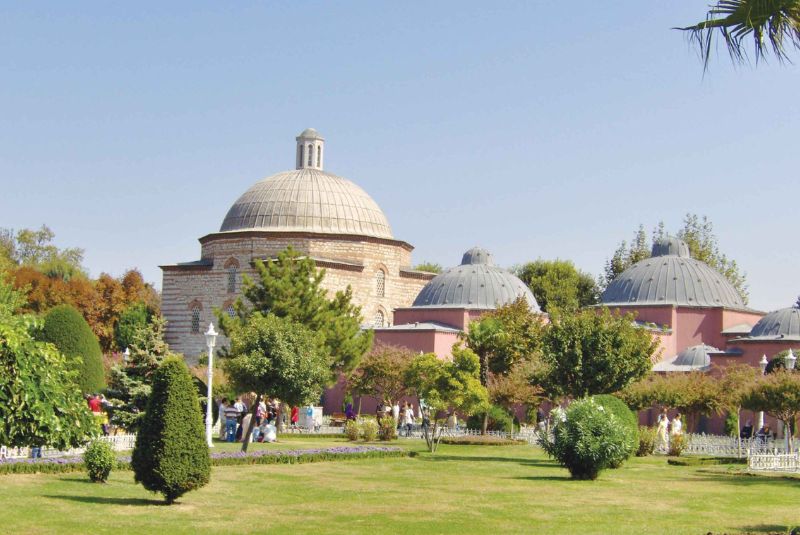
- Swimwear: Although traditional hammams typically provide a peştemal (a cotton wrap), it’s recommended to bring your own swimwear for comfort, especially for those who prefer more coverage.
- Personal Hygiene Items: The hammam provides soap and towels, but you may wish to bring your own toiletries, such as shampoo and conditioner.
- Water Bottle: Staying hydrated is essential, especially after spending time in the hot room. Bringing a water bottle is a good idea.
- Change of Clothes: Bring a fresh change of clothes to wear after your hammam experience. You’ll feel refreshed and clean, so comfortable clothing is recommended.
Bottom Line
Visiting Hurrem Sultan Hammam provides a unique and relaxing experience, combining traditional Turkish bath rituals with modern amenities. Choose a package that suits your needs and enjoy a rejuvenating break during your time in Istanbul.
Share your story!
Comment below and let us know about your Experience.
Your story inspires others!
Comment
Leave a Comment